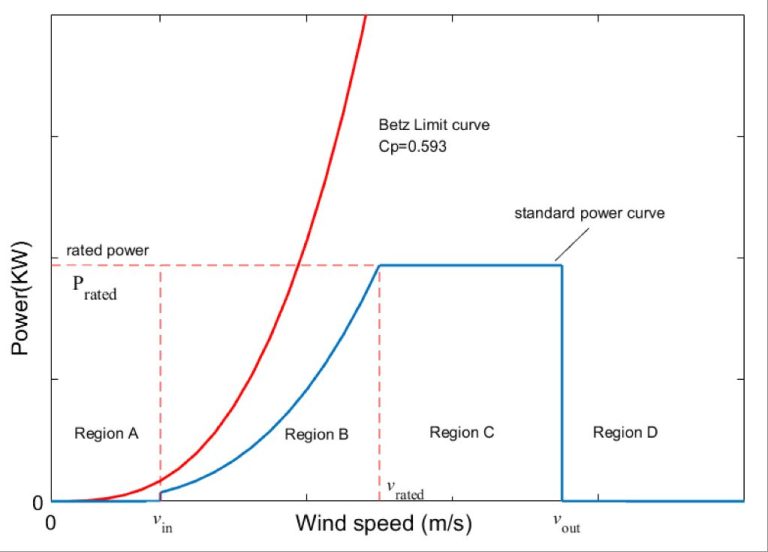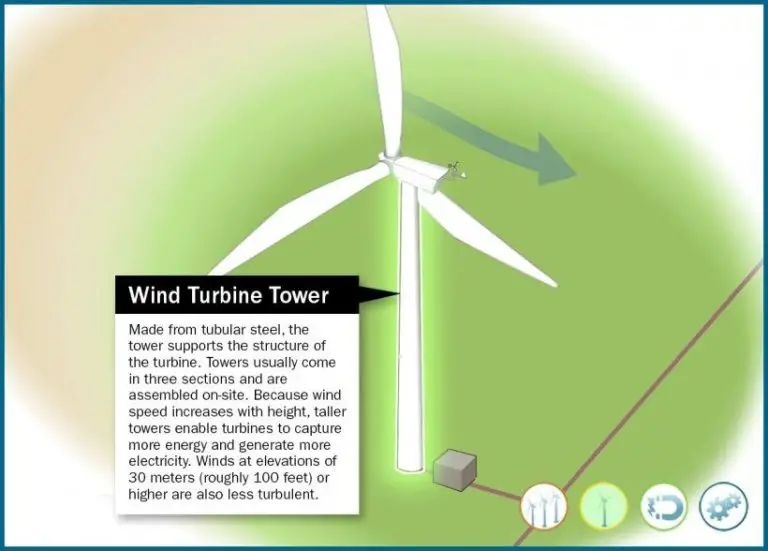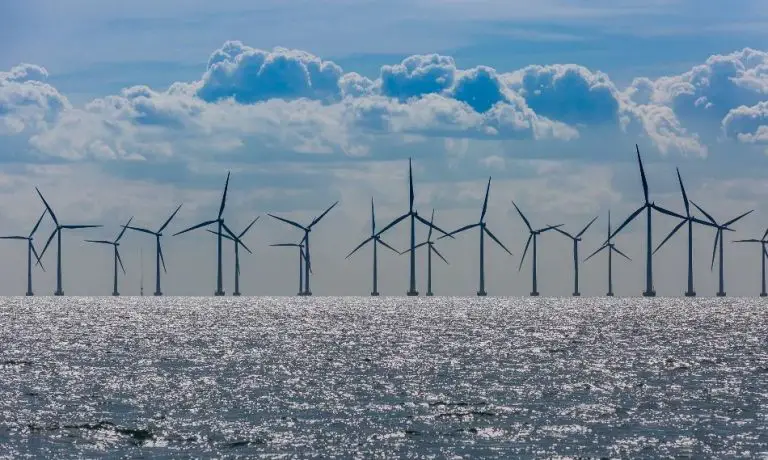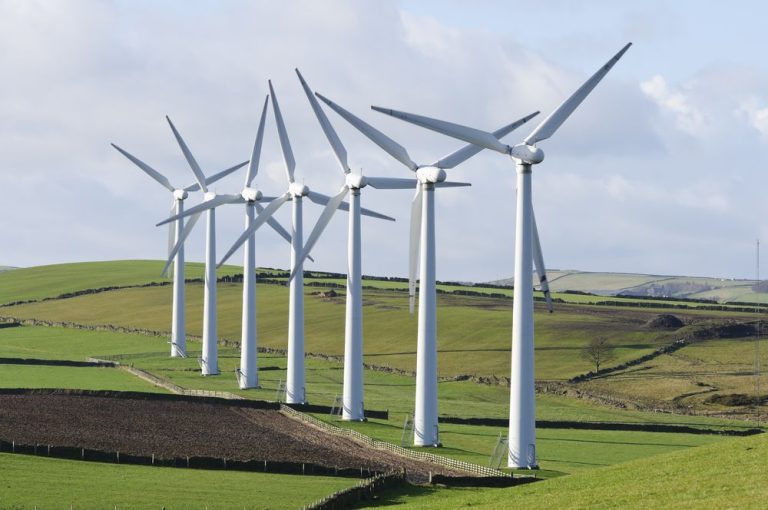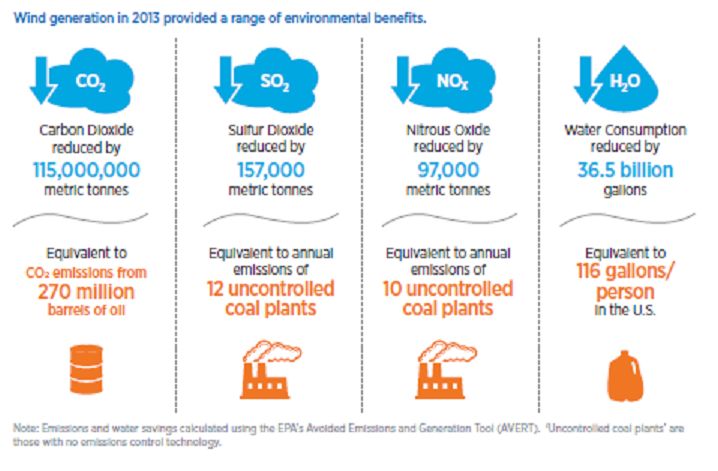Is Wind Energy A Type Of Kinetic Energy?
Both wind energy and kinetic energy play an important role when discussing renewable energy sources. Wind energy is the kinetic energy of wind converted into mechanical energy by wind turbines and generators for electricity. Kinetic energy is energy possessed by any moving object. The basics of kinetic energy help explain how wind turbines are able to harness the movement of air to generate renewable power.
What is Wind Energy?
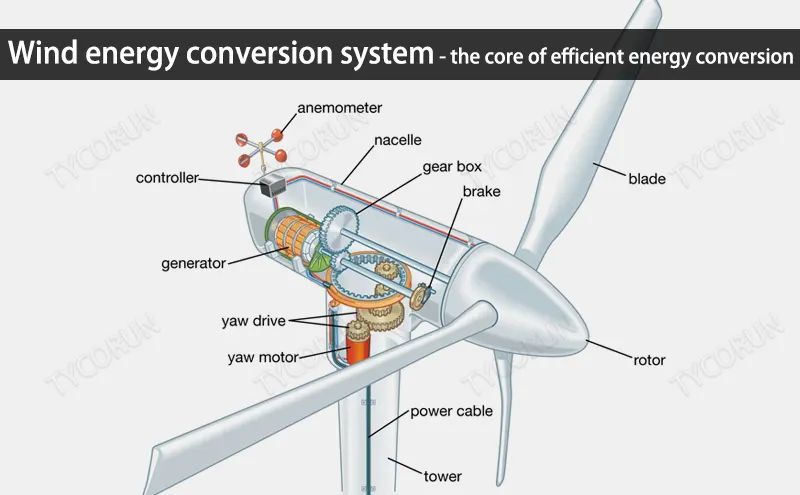
Wind energy is a form of renewable energy that utilizes the natural kinetic energy generated by wind. Wind energy is harnessed by using mechanisms like wind turbines to convert the mechanical energy of the wind into electrical energy.
Wind turbines use large blades that spin as the wind blows across them. This rotational motion turns a generator to produce electricity. The kinetic energy of the wind that makes the turbine blades spin is converted into usable electric energy for human consumption and use.
The amount of energy that can be generated from wind depends on the speed of the wind. The higher the wind speed, the more kinetic energy it contains to spin the turbine. Areas with consistently high winds, like coastlines, mountains, and plains, are ideal locations for wind farms with clusters of wind turbines.
Wind power is considered a renewable and clean energy source. It does not generate any atmospheric emissions or greenhouse gases. Utilizing wind energy to generate electricity continues to grow across the world as an important component of strategies to develop sustainable energy sources and mitigate climate change.
What is Kinetic Energy?
Kinetic energy is the energy of motion. Objects and substances in motion, such as wind, water, and moving vehicles, possess kinetic energy. The faster an object moves, the more kinetic energy it has. Kinetic energy depends on the mass and velocity of the moving object. The kinetic energy formula is:
Kinetic Energy = 1/2 (mass x velocity^2)
For example, when wind blows quickly through a wind turbine’s blades, it transfers some of its kinetic energy to the turbine. The spinning turbine converts this kinetic energy into electricity. Kinetic energy can also apply to electrons moving through wires or objects falling from heights. Anytime there is motion, there is kinetic energy involved.
Wind Energy Harnesses Kinetic Energy
Wind energy captures the naturally occurring kinetic energy of wind and converts it into usable electricity. When wind blows, it puts the turbine blades in motion. The kinetic energy of the moving blades causes the rotor to spin like a propeller. This spinning rotor turns a generator to produce electricity. So wind turbines function by converting the kinetic energy of moving air, also known as wind energy, into rotational kinetic energy used to generate electrical power.
The key takeaway is that wind energy is a form of kinetic energy. The wind possesses kinetic energy due to the motion of air molecules. Wind turbines are designed to transform this kinetic energy of the wind into mechanical power which then generates electricity. So wind power plants harness the kinetic energy of the wind and convert it into electricity that we can use to power homes and businesses.
Wind Speed Determines Kinetic Energy
The kinetic energy available in wind is directly proportional to the wind speed. This means that faster wind speeds generate more kinetic energy that can be harnessed by wind turbines. The formula for kinetic energy is:
Kinetic Energy = 0.5 x m x v2
Where m is the mass of air moving past the turbine blades per second, and v is the wind speed. This formula shows that the kinetic energy increases exponentially with wind speed. For example, if the wind speed doubles from 5 m/s to 10 m/s, the kinetic energy does not just double, but actually increases by a factor of 4 (22 = 4). This nonlinear relationship means that turbines in windier locations can generate a lot more electricity than those in less windy areas. Overall, the wind speed is the most important factor determining the amount of kinetic energy available.
Other Examples of Kinetic Energy
In addition to wind, there are many other examples of kinetic energy in the world around us. For instance, moving water in rivers and oceans contains kinetic energy. Hydroelectric dams are designed to convert the kinetic energy of flowing water into electricity. The faster the water moves, the more kinetic energy it contains.
Moving vehicles also possess kinetic energy proportional to their mass and velocity. A car driving down the highway has more kinetic energy than a bicycle rolling down the street. This kinetic energy can be harnessed through regenerative braking systems to recharge electric vehicle batteries.
There are also many smaller-scale examples of kinetic energy, like the vibrations of atoms and molecules, the movement of pendulums, and the motions of springs and other elastic devices. The field of physics defines kinetic energy as the energy possessed by any object or particle while in motion.
Challenges of Wind Energy
Despite the many benefits of wind energy, there are some challenges that need to be addressed for it to reach its full potential. Some of the main challenges facing wind power include:
Intermittent Nature
Wind energy is an intermittent resource, meaning it is not available at all times. The wind blows when it wants to blow, and energy output depends heavily on wind patterns. This intermittent nature makes wind power more unpredictable than sources like coal or natural gas. Additional infrastructure like energy storage is often needed to smooth out delivery and align with demand.
Land Usage
Modern wind turbines are massive structures that require a substantial amount of land area. This can make siting difficult, as communities may oppose having wind farms built near residential areas. There are also concerns around the impact on wildlife habitats and migration patterns. Careful planning is required to find suitable sites.
Noise Pollution
The spinning blades of wind turbines produce aerodynamic noise that some consider disruptive. Although modern designs have reduced noise, some people living near wind farms have complained of audible “whooshing” sounds, which may cause irritation. Proper siting and setbacks from homes can help mitigate noise pollution.
Growth of Wind Energy
The generation of electricity from wind power has expanded rapidly over the past decade. According to the U.S. Energy Information Administration (EIA), the total utility-scale electricity generation from wind power in the United States has grown from 6 billion kilowatt-hours in 2000 to 338 billion kilowatt-hours in 2020. This represents an increase in wind’s share of total U.S. electrical generation from 0.1% in 2000 to 8.4% in 2020.
Several factors have contributed to the growth of wind power capacity and generation. Technological advances have allowed for larger wind turbines that can capture more wind energy, as well as taller towers to access steadier winds at higher altitudes. State and federal policies like renewable portfolio standards and tax incentives have also encouraged the construction of new wind projects.
The EIA projects wind generation will continue expanding rapidly, reaching 592 billion kilowatt-hours in 2022 and 931 billion kilowatt-hours in 2023. This is driven by near-term additions to wind capacity, as well as full-year generation from capacity added in late 2021. The growth puts wind on track to surpass hydropower as the leading source of renewable electricity generation in the U.S.
Comparisons to Other Renewables
Wind energy has some key differences when compared to other major renewable energy sources like solar and hydro power.
In terms of scale, wind power has grown rapidly in recent decades but still lags behind hydropower globally. As of 2021, installed wind capacity was around 743 GW worldwide compared to over 1,300 GW of hydro capacity. However, wind is gaining ground and is now the largest source of renewable electricity in Europe.
Solar PV capacity is also rising quickly, reaching over 700 GW globally by the end of 2020. But wind has maintained a solid lead over solar in terms of electricity generation, in part due to the better capacity factors of wind farms.
Costs have fallen dramatically for both wind and solar power as technologies have improved. Contract prices for wind in the U.S. averaged around $20 per MWh in 2019 while utility-scale solar PPAs dropped below $30/MWh. So they are now highly competitive with fossil fuels.
Growth rates for wind and solar have been high as costs decline. The IEA predicts capacity for both could increase 2-4 fold by 2040 if clean energy goals are met. This highlights wind and solar’s potential as the world transitions away from coal and natural gas.
Wind has some advantages over solar as a power source. It often produces more at night whereas solar only generates when the sun is shining. Wind output also peaks in cold months when electricity demand is higher in many regions. The complementary nature of wind and solar is leading more projects to co-locate both technologies.
Conclusion
In summary, wind energy is indeed a direct form of kinetic energy. Kinetic energy is the energy of motion, and wind turbines capture the kinetic motion of wind and convert it into mechanical power. The wind flows over the blades of the wind turbine, putting the blades in motion. This kinetic energy gets transferred through the shaft to turn an electric generator and produce electricity. Therefore, wind energy successfully harnesses the natural kinetic motion of the wind, making it a prime example of a kinetic energy source. With proper site selection and turbine design, the kinetic energy present in wind can be an abundant, renewable source of electricity.

